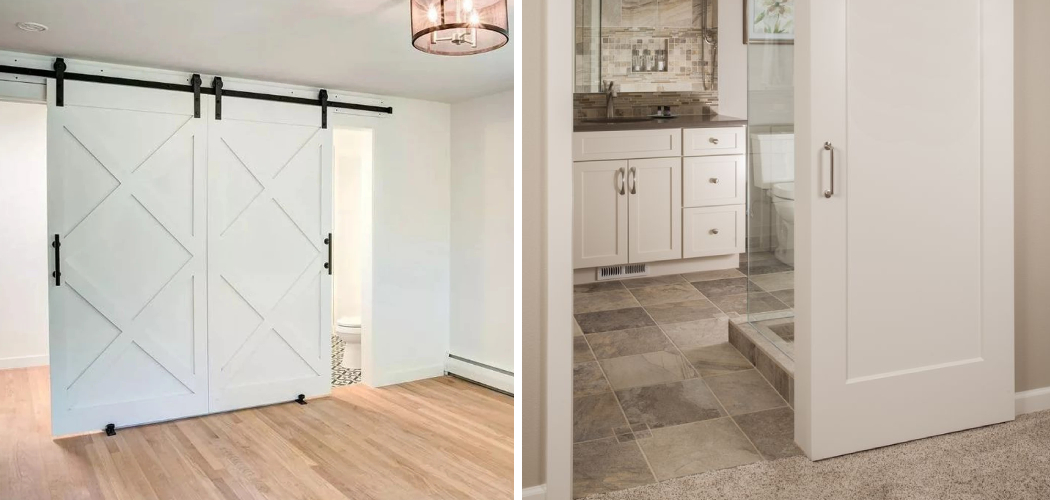Are you looking for a way to add charm and character to your home while also increasing its security? Do you have a sliding barn door in your home but don’t know how to lock it? You’re not alone! Installing a sliding barn door is an excellent solution!
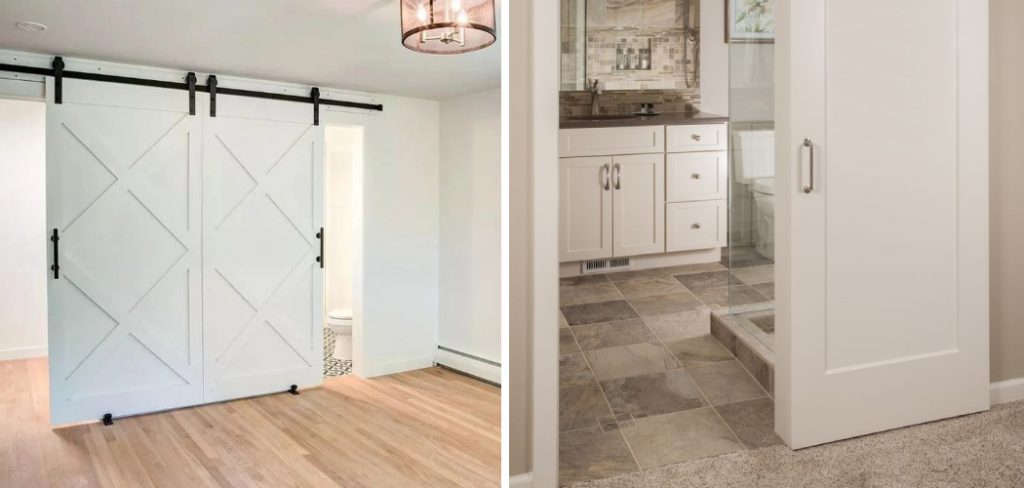
Not only do they offer rustic vibes, but if you take the time and effort to properly secure them, they will help protect your family from unwanted visitors. Sliding doors are becoming increasingly popular for many reasons, including the unique beauty they add to a space.
In this blog post, we’ll be walking through how to lock a sliding barn door so that you can have peace of mind when leaving your home. We’ll provide tips on both traditional locks and digital smart solutions, so no matter what your specific needs are – we’ve got something that will work for everyone! So, let’s get started – read ahead!
Is It Difficult to Lock Sliding Barn Door?
No! You don’t need to be a professional carpenter or handyman to lock a sliding barn door. Even if you’re not the most experienced DIYer, there are plenty of options out there that are simple and easy to install.
What Are My Options for Locking the Sliding Barn Door?
There are several different ways to lock a sliding barn door, depending on your needs. If you’re looking for an old-fashioned approach, you can install a traditional lock and key system. This can be done either by drilling holes in the door frame or by affixing plates to the inside of the door that allow you to slide a deadbolt into place.
If you prefer something more modern, there are plenty of digital solutions available as well. Smart locks use Bluetooth and Wi-Fi connections to give you access control from anywhere in the world.
Many of these systems even allow you to set time restrictions for when the door can be opened or closed, and some are equipped with motion detectors and alarms that will alert you if someone attempts to gain unauthorized access.
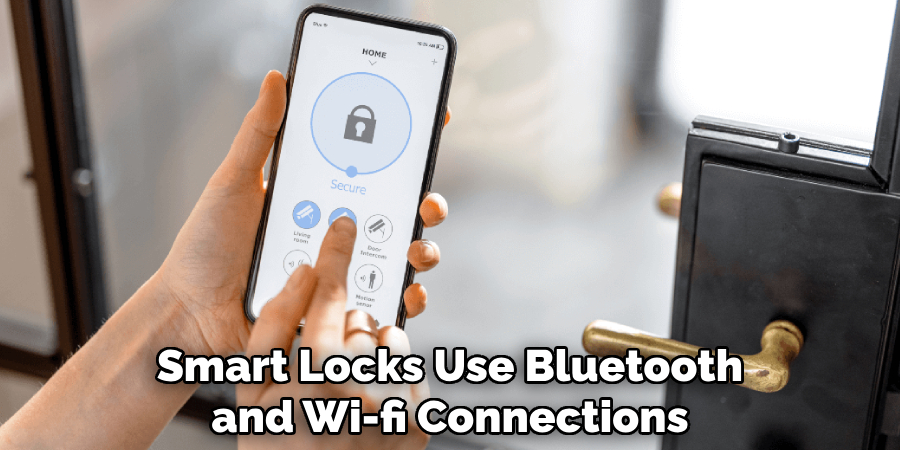
Required Items
Regardless of which system you choose, there are some basic materials and tools that you’ll need. If you’re installing a traditional lock and key system, start by measuring the door frame and purchasing hardware that fits. You’ll need
- Drill bits
- Screws
- Latch
- Strike plate
- Hinges (if applicable)
- Lock and key (if you’re using a traditional locking system)
If you’re going with a digital solution, all you’ll need is the appropriate smart lock and an app (most of these come with their own).
How to Lock a Sliding Barn Door in 10 Steps
Step 1: Measurement
Measure the gap between the door and frame to determine what type of hardware you need. The gap should be between 1/4 inch and 3/4 inch. Also, measure the height and width of your door to make sure you’re purchasing hardware that will fit properly.
Step 2: Purchase Hardware
Purchase the necessary hardware for your specific needs. Make sure all pieces are compatible with each other, and purchase extra screws and drill bits in case any get damaged during installation.
Step 3: Affix the Latch
Once you have all of your supplies, it’s time to affix the latch. Use a drill bit to make pilot holes in the door frame for screws and then attach the latch securely.
Step 4: Install Strike Plate
Next, install the strike plate on the outside of the doorframe. This will be where the door latches when it is closed. Installing the strike plate is fairly straightforward – just make sure it’s affixed securely.
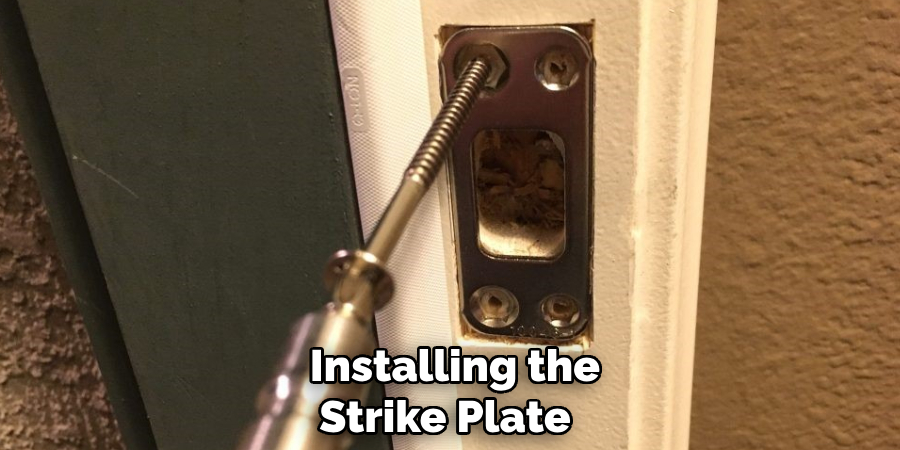
Step 5: Install Lock and Key/Smart Lock
If you’re using a traditional lock and key system, install the lock by drilling pilot holes on either side of the door frame for screws. Then, insert your key into the lock to test it out.
If you’re using a digital system, use the accompanying app to connect your device to the door and begin programming it. Make sure to save your settings so that you can easily access them in the future.
Step 6: Install Hinges (if applicable)
If you need hinges for your sliding barn door, install them now. These will be affixed to the wall and door so that it can open and close smoothly.
Step 7: Test Your Lock
Once everything is installed, it’s time to test your luck! Close the door and make sure that the latch is engaging properly with the strike plate. If you’re using a traditional lock and key system, also make sure that you can open the door with your key.
Step 8: Adjust if Necessary
If necessary, make any small adjustments to ensure that everything is working properly. For example, if the latch isn’t engaging as it should be, try adjusting the strike plate slightly until it fits snugly against the latch.
Step 9: Clean Up
Now that your lock is installed and working correctly clean up any debris that may have accumulated during installation. Cleaning up ensures that your door will remain in good condition for years to come.
Step 10: Enjoy the Security of Your Lock!
Once everything is installed and adjusted, it’s time to enjoy the security of your lock! Whether you are using a traditional lock and key system or a digital solution, you can now rest assured that your sliding barn door is securely locked.
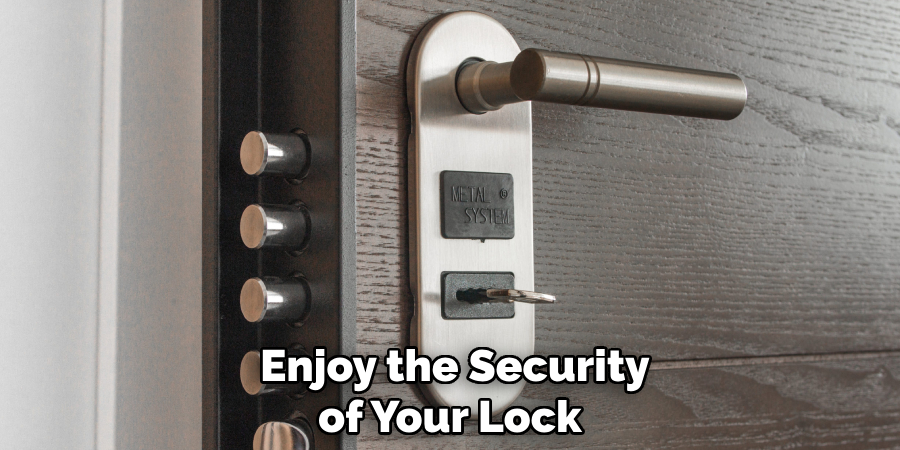
Now that you know how to lock a sliding barn door, it’s time to take your security measures one step further and look into additional home protection solutions such as alarm systems or cameras! With all these in place, you can rest easy knowing that your family is safe and secure.
8 Safety Measures to Follow for Sliding Barn Doors
Sliding barn doors have become increasingly popular in recent years as a stylish way to dress up your home. But while these modern-looking doors can provide plenty of charm, they also need to be installed safely and securely. Here are 8 safety measures to keep in mind when locking a sliding barn door:
- Ensure that the doors are firmly attached to the wall or door frame. This will ensure that the sliding barn doors remain in place and secure even when locked. Ensuring that the doors are securely attached can also help to prevent them from being pushed open or pulled off accidentally.
- Install a lockable latch onto the door frame so it is accessible from inside and outside. This will provide an extra layer of security when locking sliding barn doors, as well as giving you peace of mind that the door remains securely locked even when not in use.
- Position the latch at least two feet above the floor to ensure that it is out of reach for children and pets. This will prevent them from tampering with the lock or inadvertently unlocking the door while you are not home.
- Install a deadbolt onto each side of the door frame for added security. A deadbolt should be placed at least a foot away from the door frame so that it is not accessible from outside. This additional layer of security will ensure that the sliding barn doors remain securely locked, even when not in use.
- Install tamper-proof screws into each side of the door frame to make sure they stay firmly attached to the wall or door frame. Tamper-proof screws will prevent anyone from trying to take off or break the locks on the door and ensure that your sliding barn doors remain securely locked.
- Install a motion sensor light onto the door frame and make sure it is out of reach for children or pets. A motion sensor light will turn on if someone tries to open or tamper with the lock, giving you an additional layer of security and peace of mind that your sliding barn doors will remain securely locked.
- Install a door alarm on the door frame to alert you if someone is tampering with the lock or trying to open it from outside. A door alarm can be set up so that it triggers an electronic signal when the lock is opened, letting you know immediately that someone is trying to gain access.
- Regularly check the locks on your sliding barn doors to make sure they are still working properly and securely locked. Periodically checking the locks will ensure that they remain secure and in good condition, giving you peace of mind that your home remains protected from unwanted intruders.
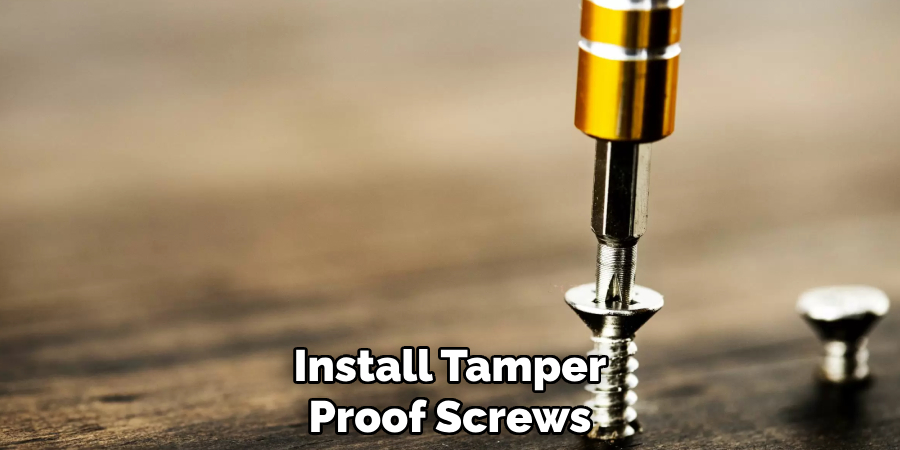
Following these safety measures on how to lock a sliding barn door when locking a sliding barn door can help to ensure that your home is protected from unwanted access.
Conclusion
To summarise, installing a sliding barn door is a great way to bring the rustic charm of the outdoors into your home. When it comes to locking this type of door, you have two main options: either install a lever handle and mortise lock or fit a keyed-lockable latch on both sides of the door. To keep your door secure, be sure to use heavy-duty hinges that allow for secure anchoring into the frame.
Additionally, regularly check the track for dirt build-up or debris that may hamper its function. With that, you have everything you need to know in order to successfully install and lock a sliding barn door – so why not get started today?
Not only will you enjoy the style and character it adds to your living space but also the peace of mind from knowing that you and your family are safe and sound. Follow these steps on how to lock a sliding barn door, and you’ll be one step closer to enjoying the perfect sliding barn door for your home.
